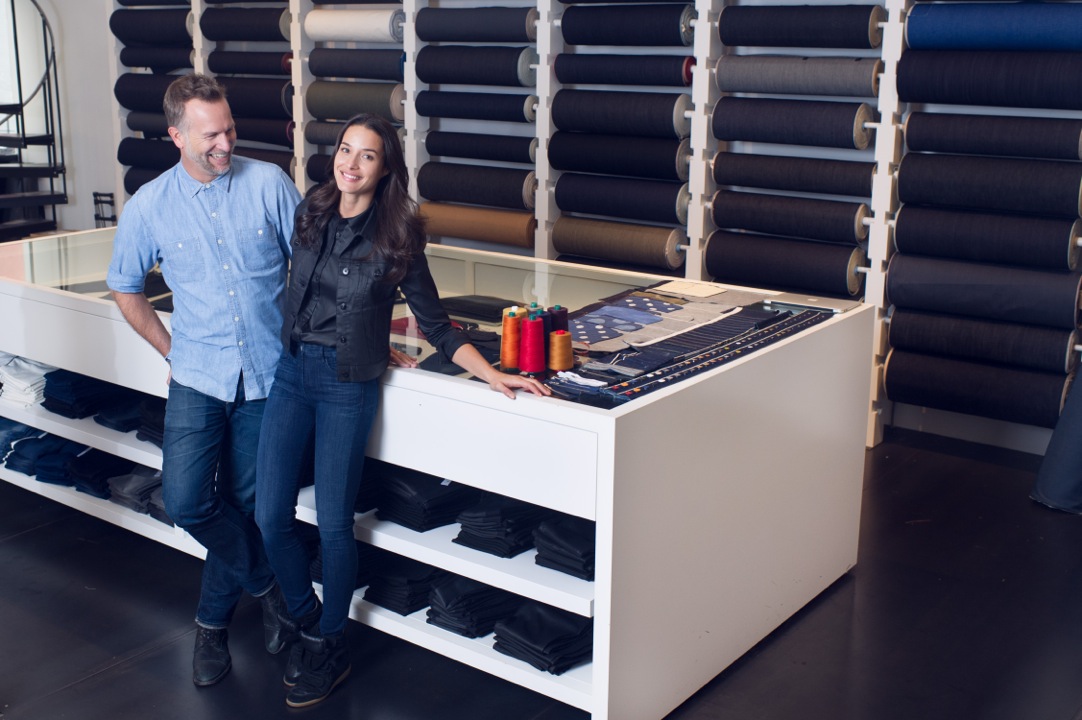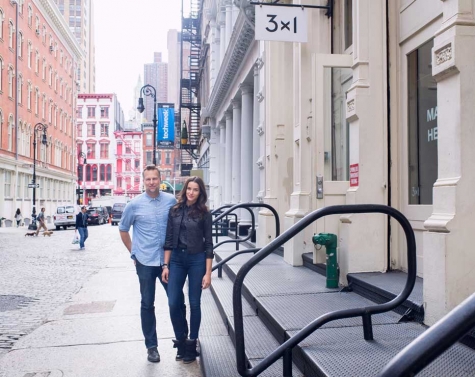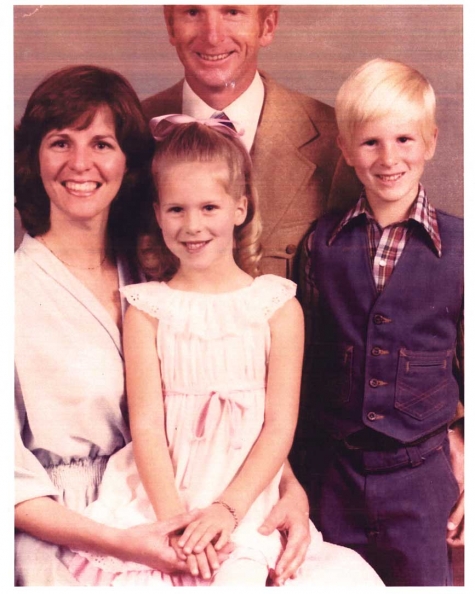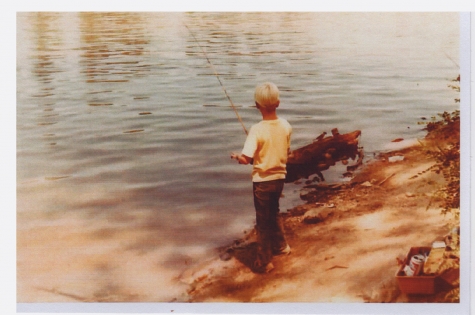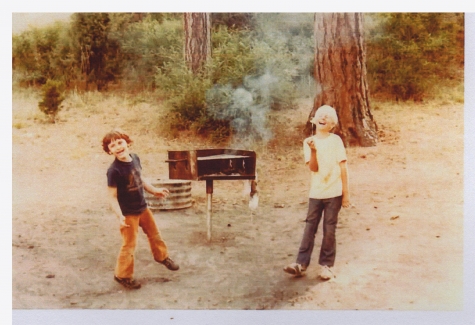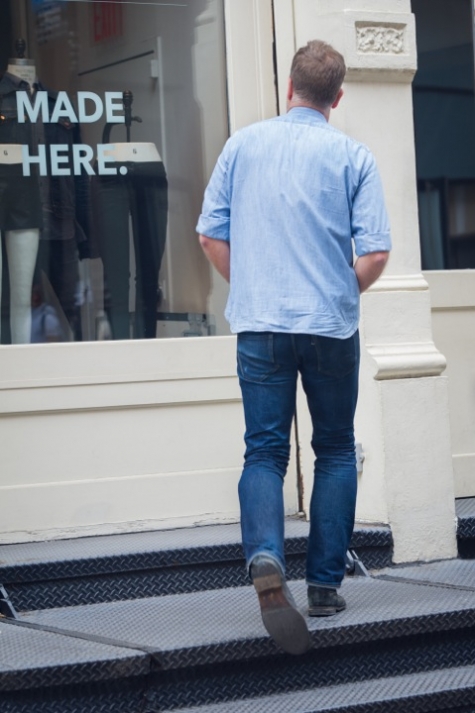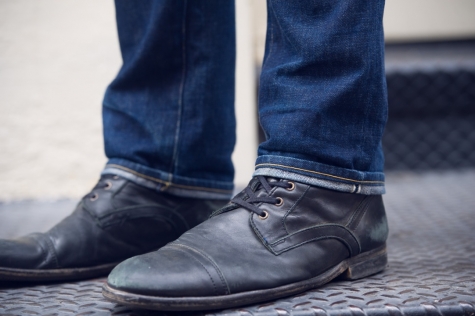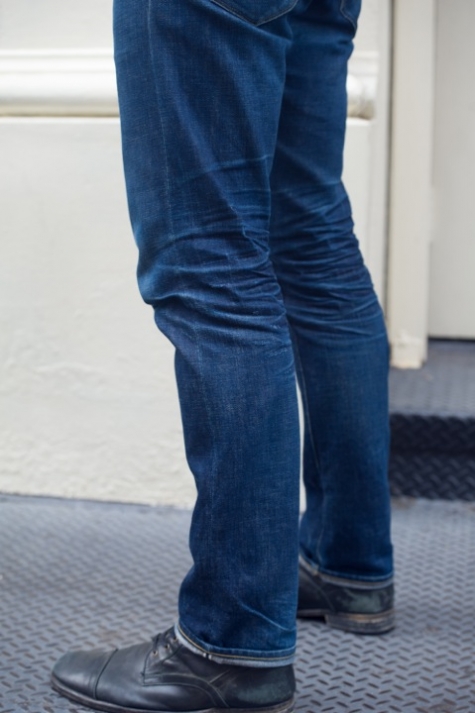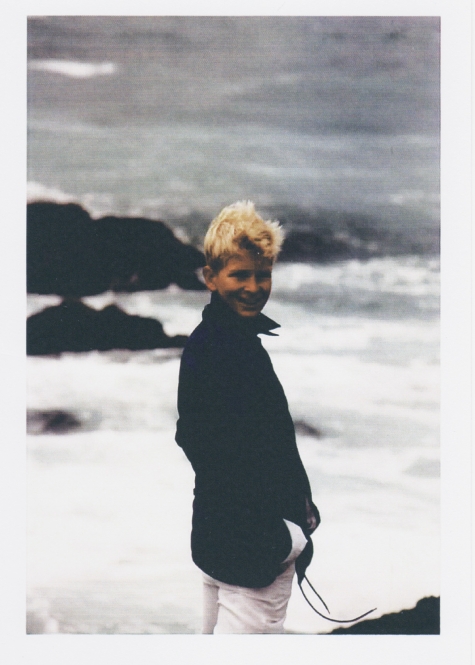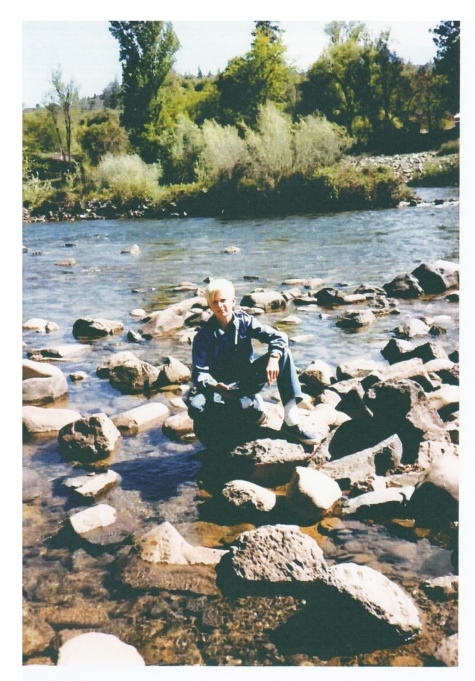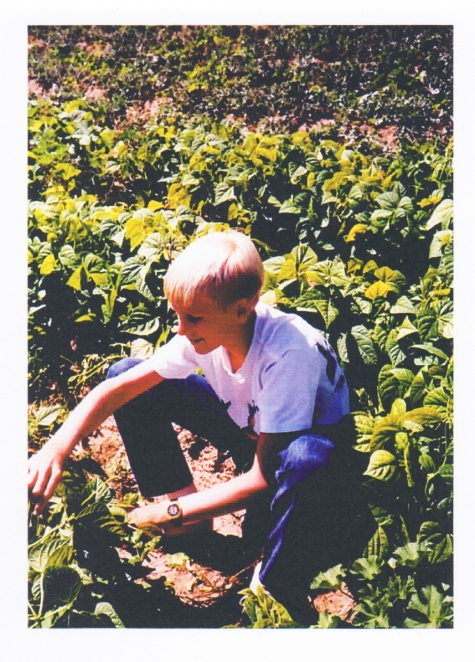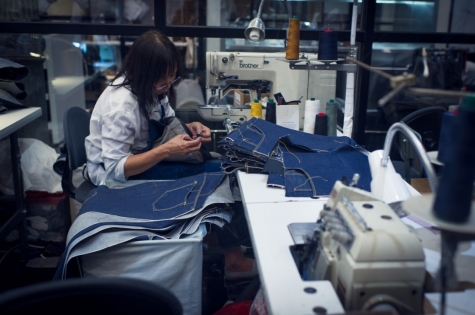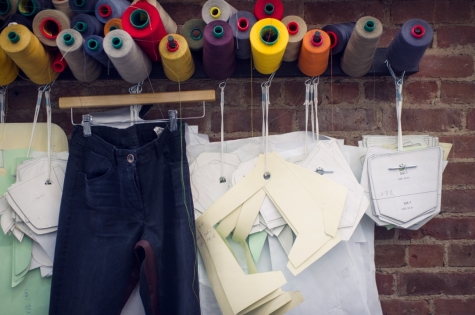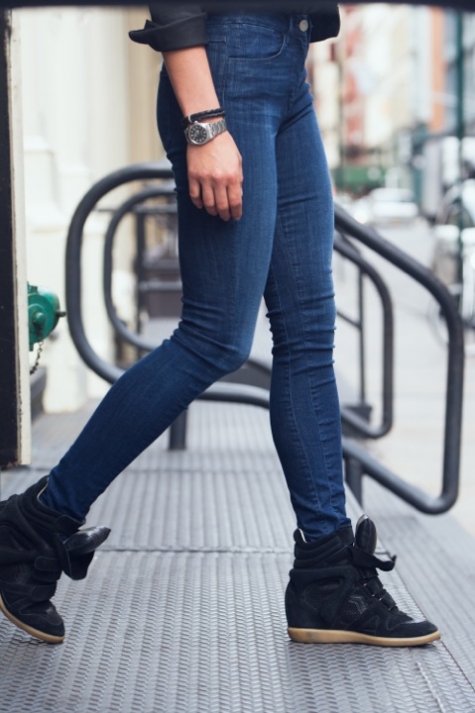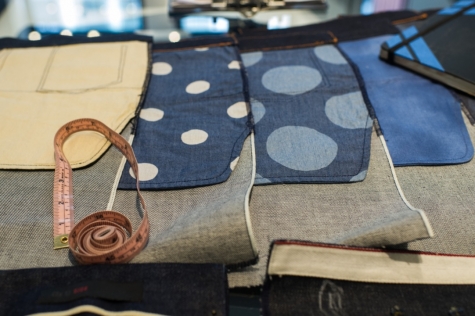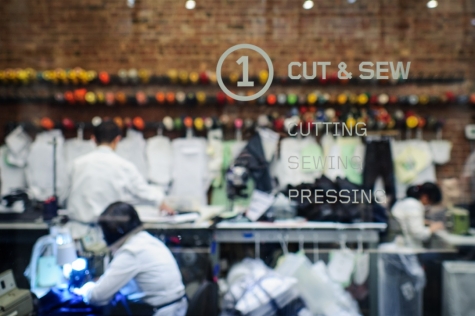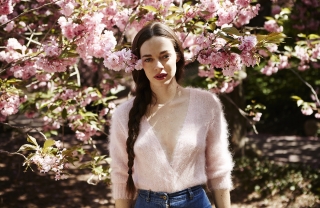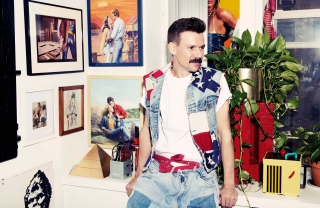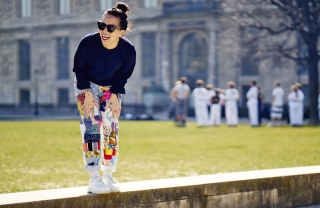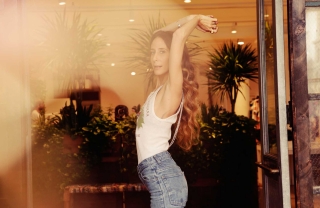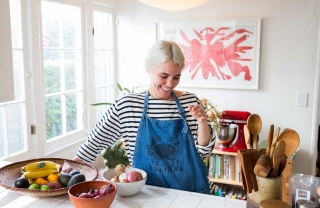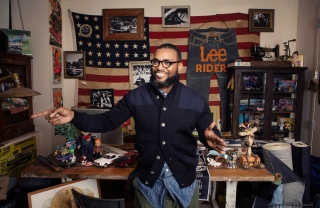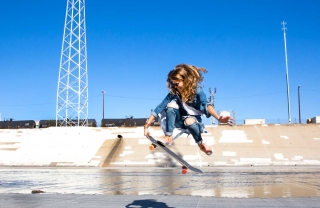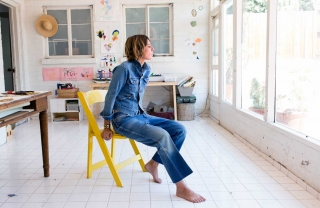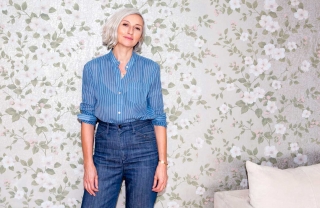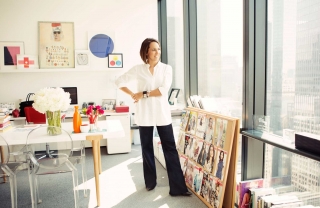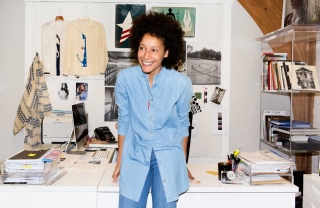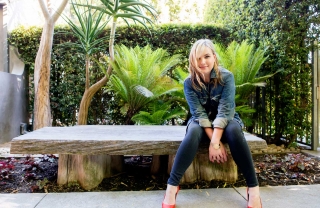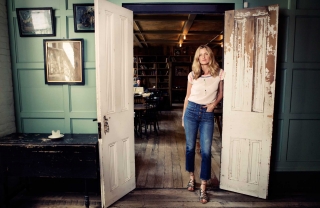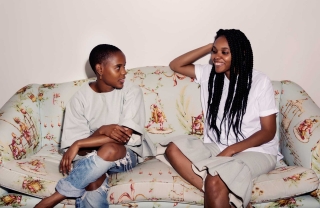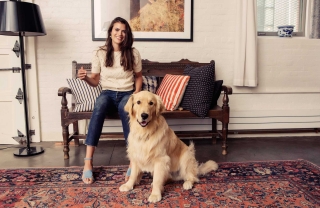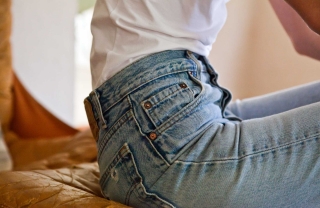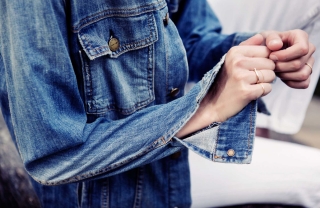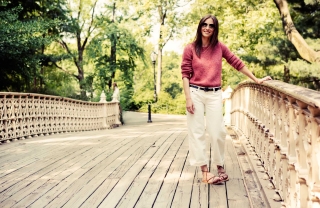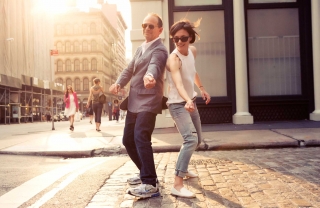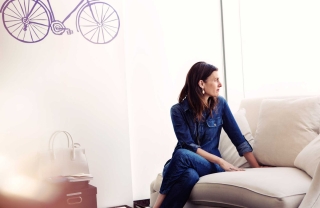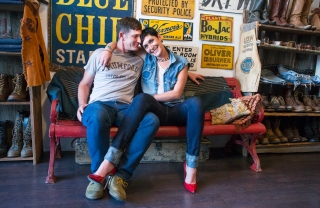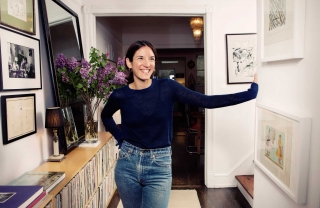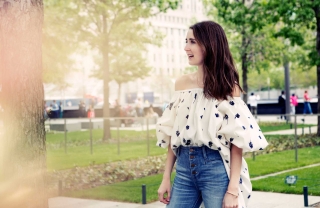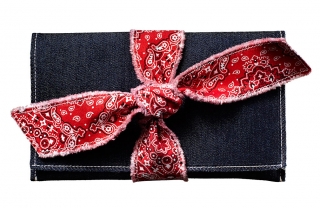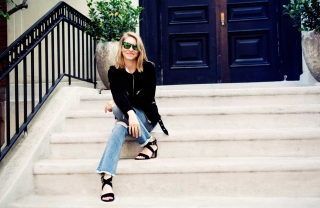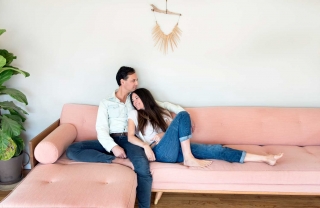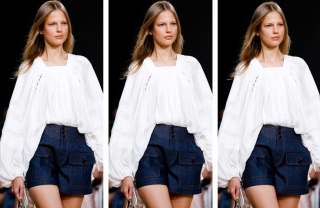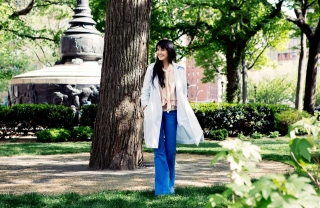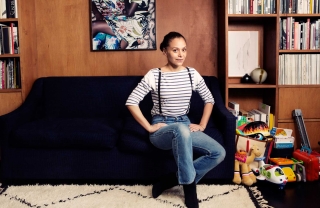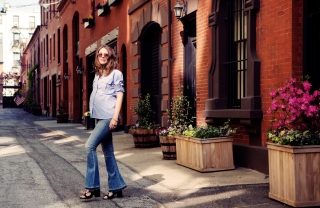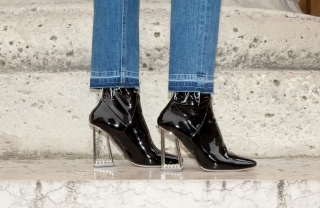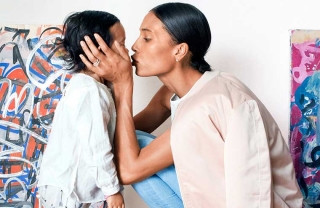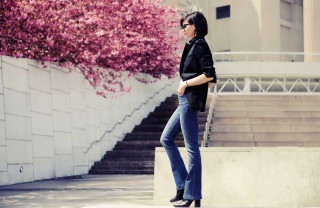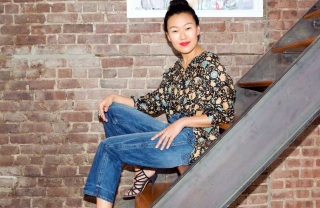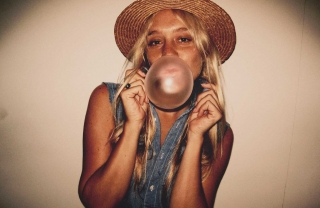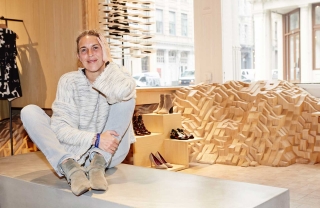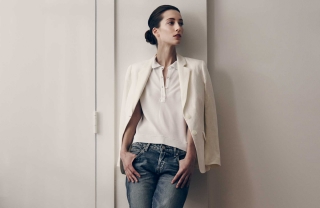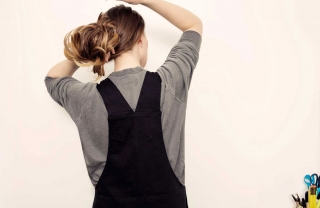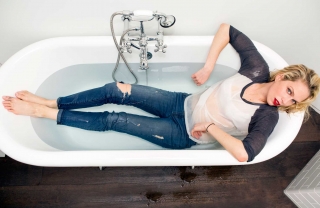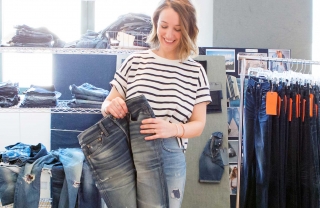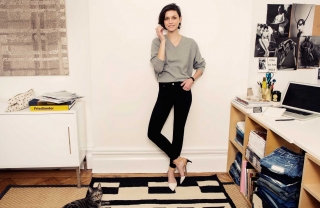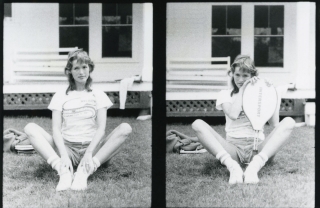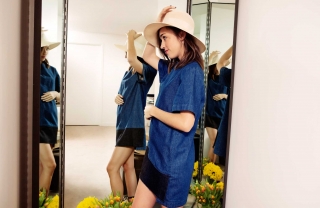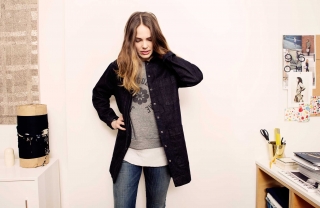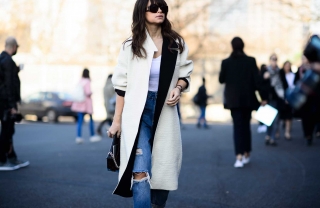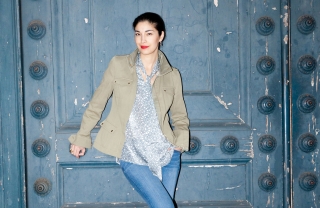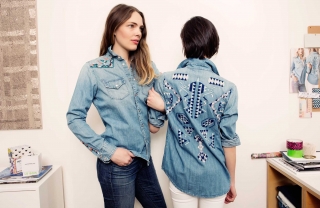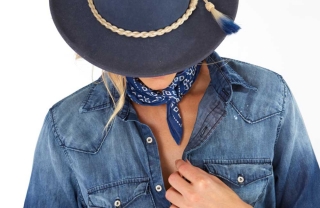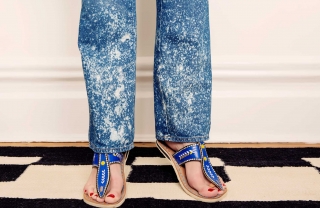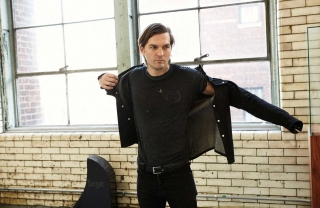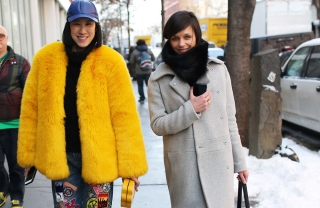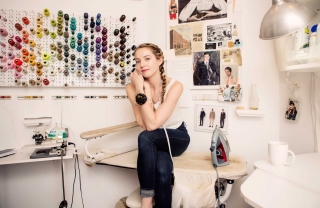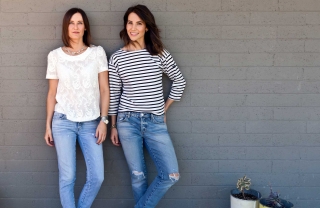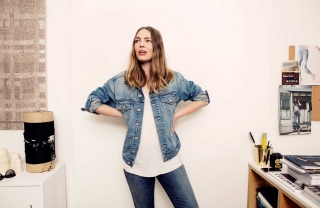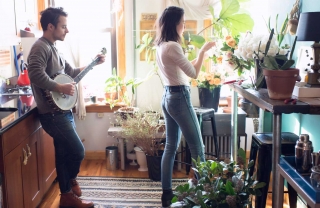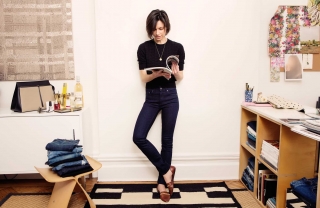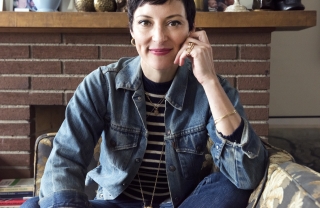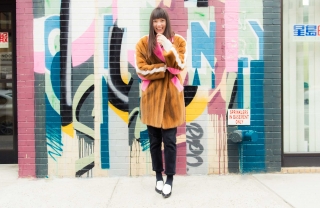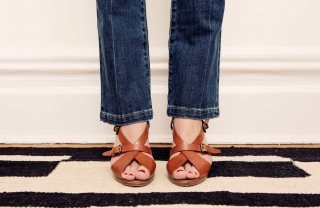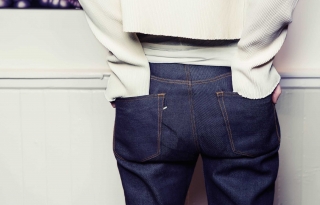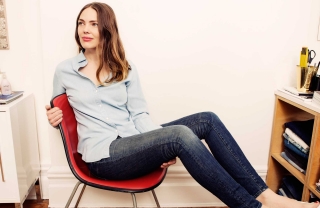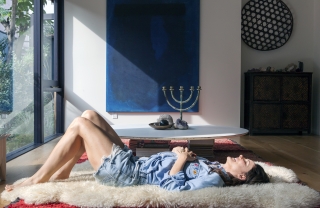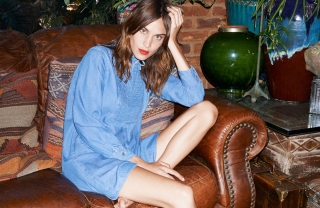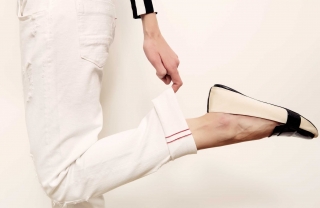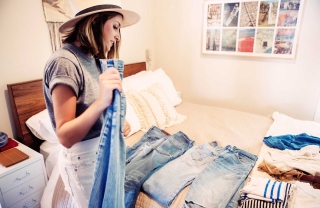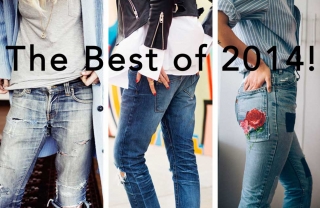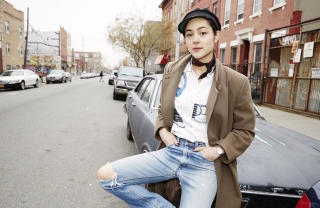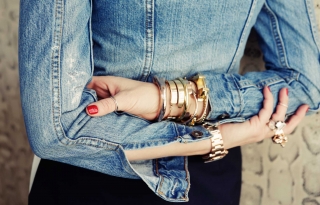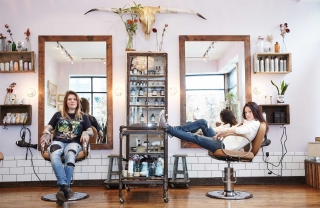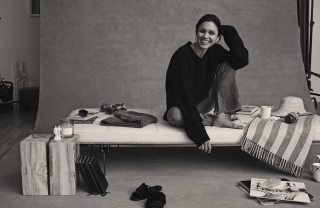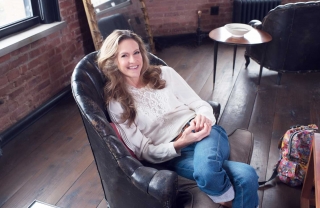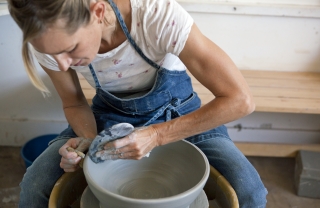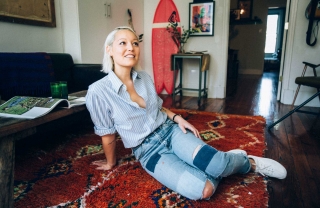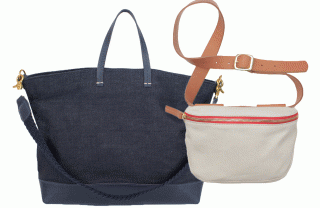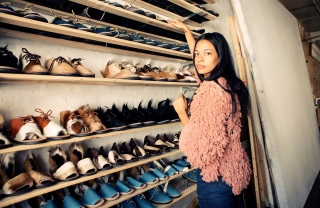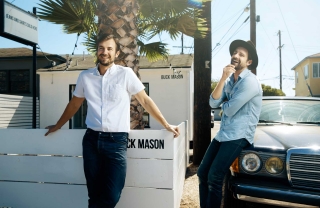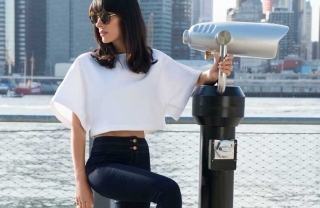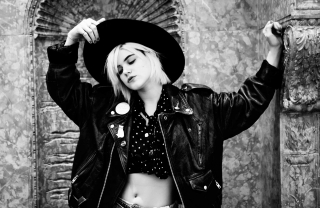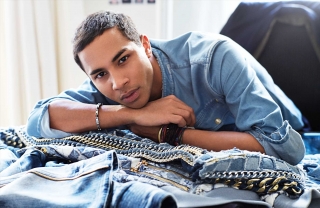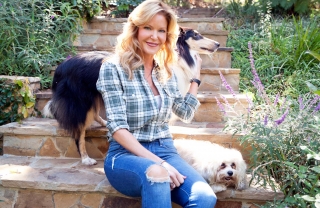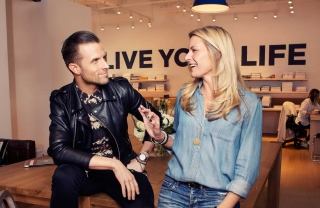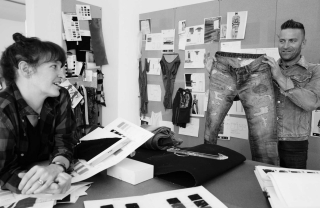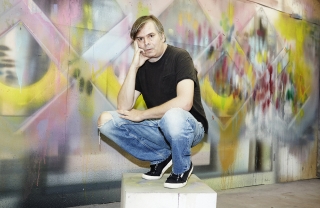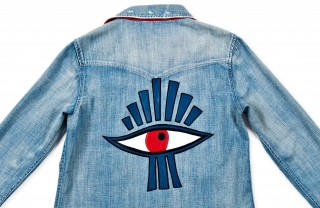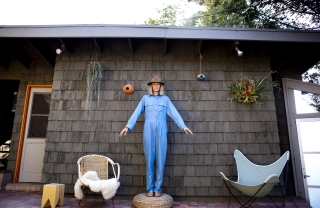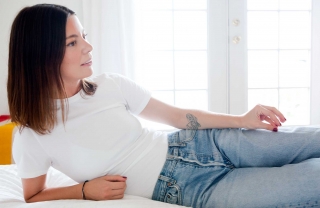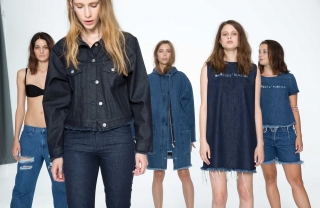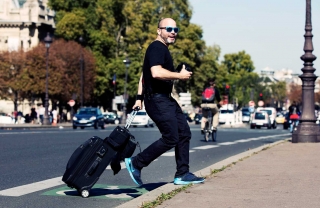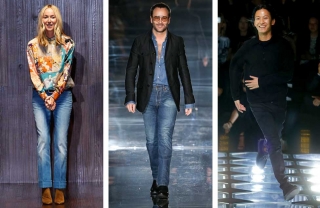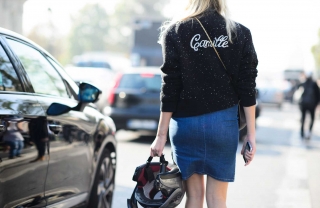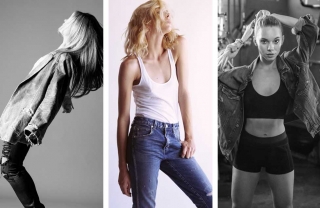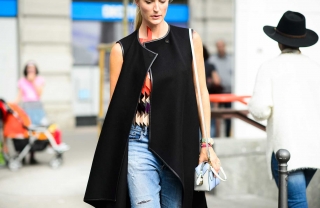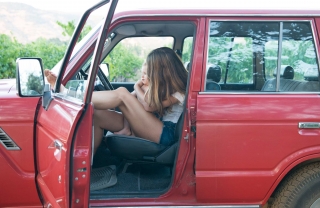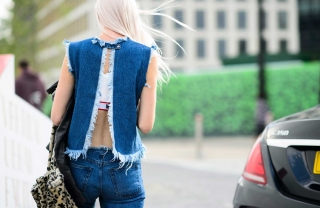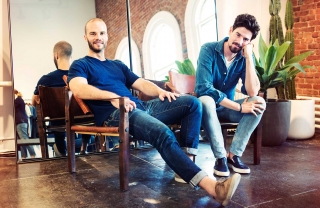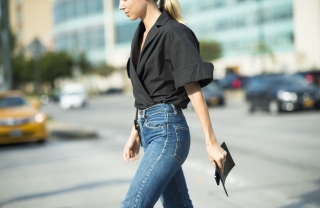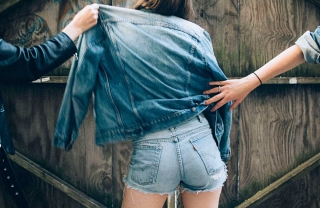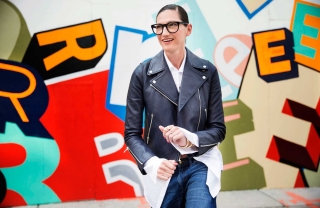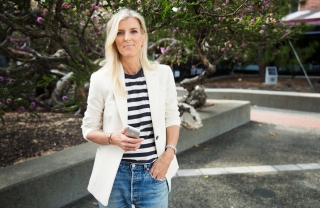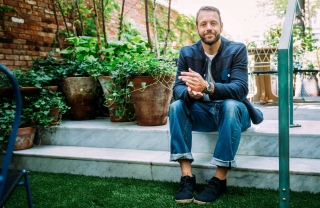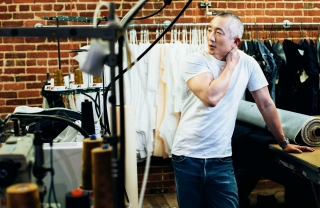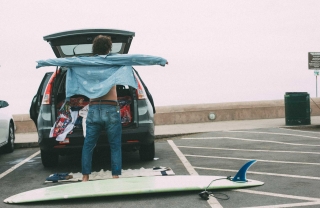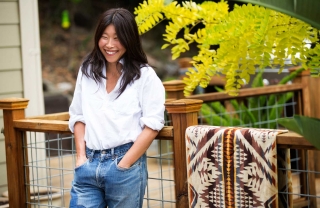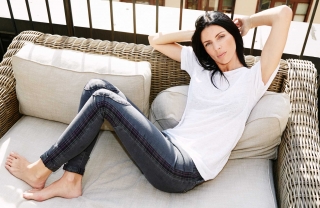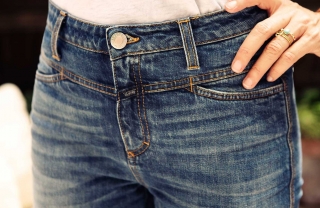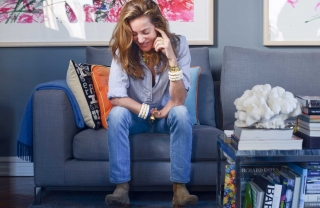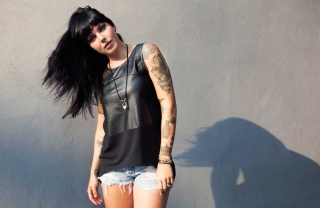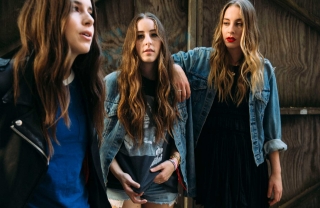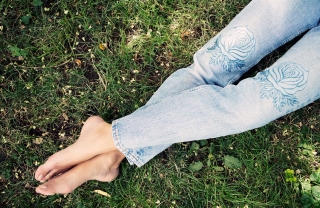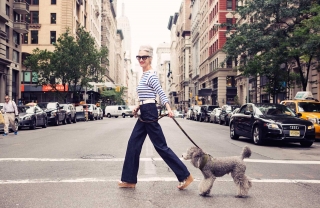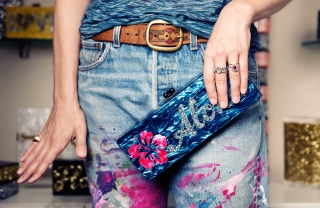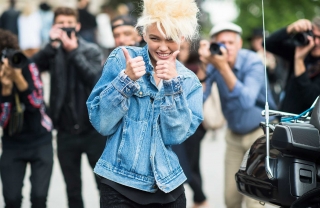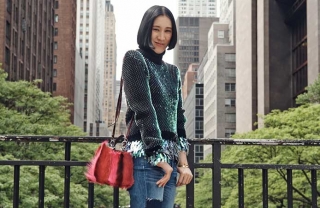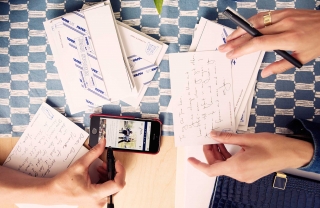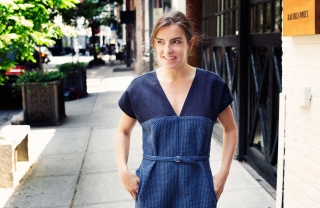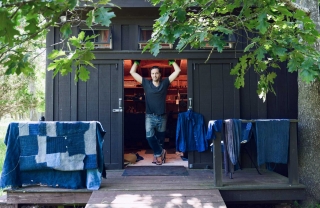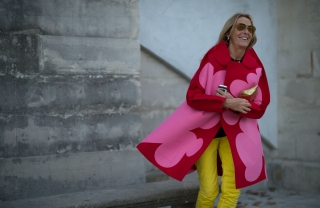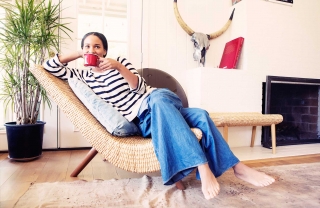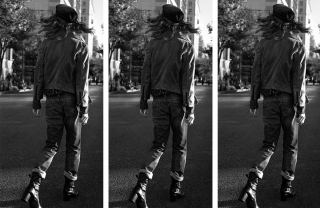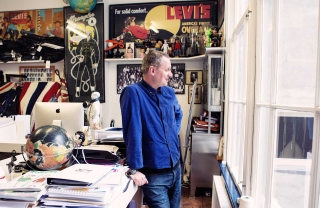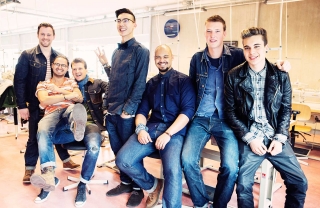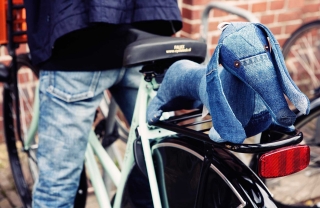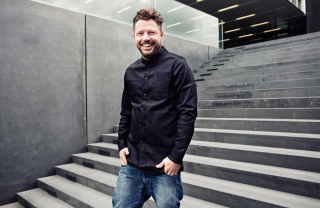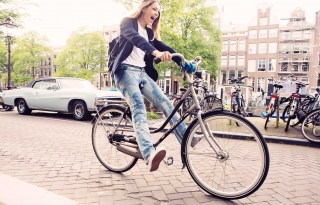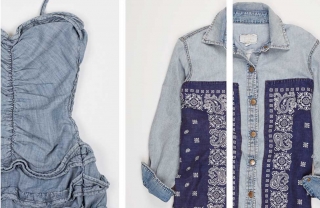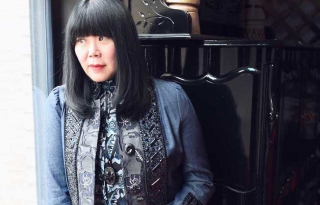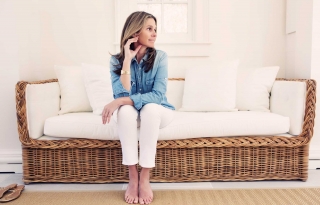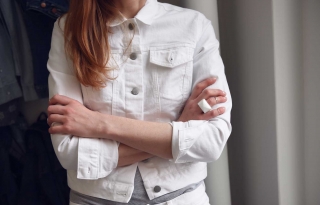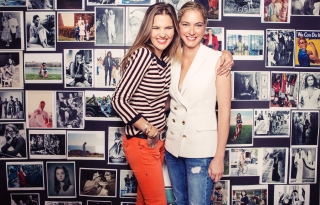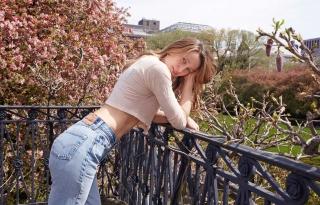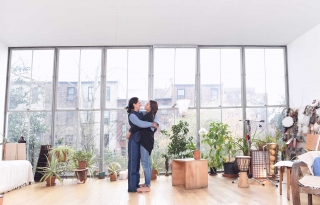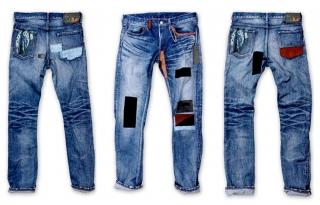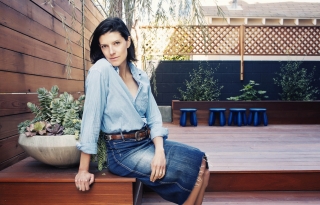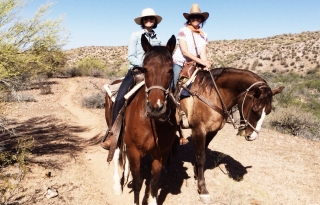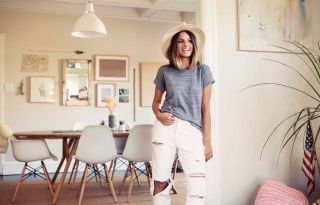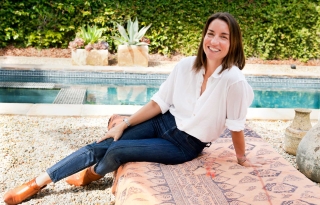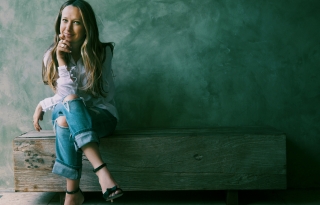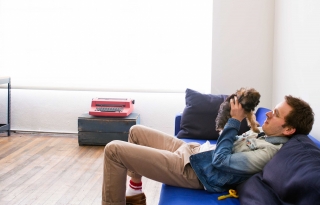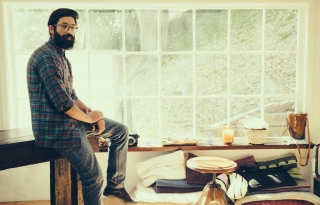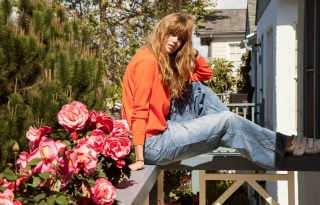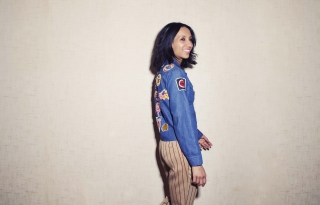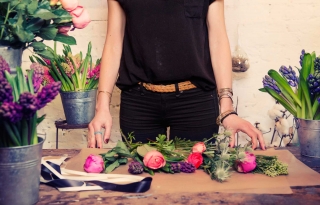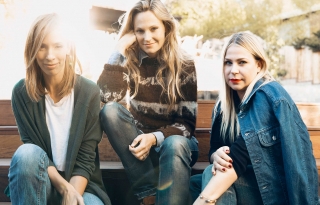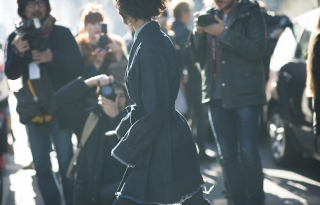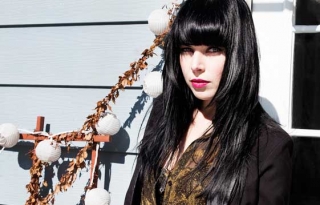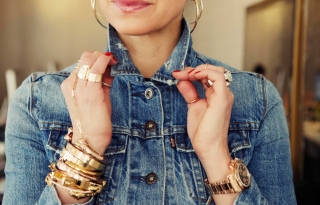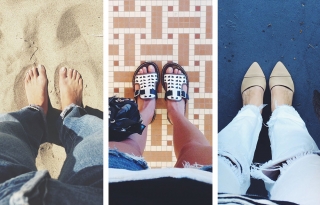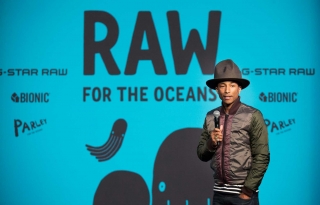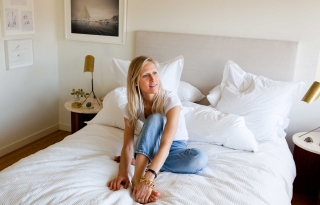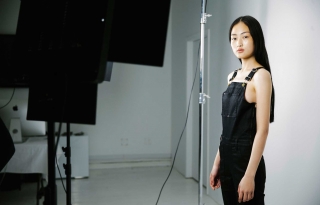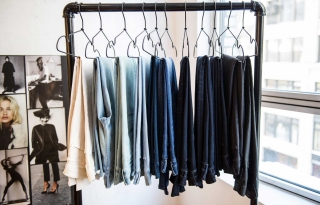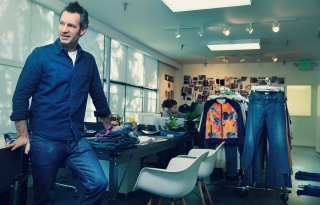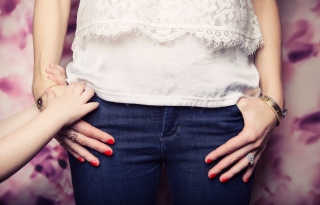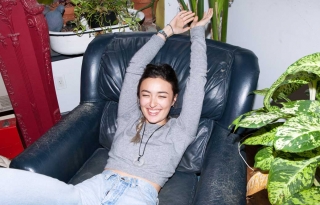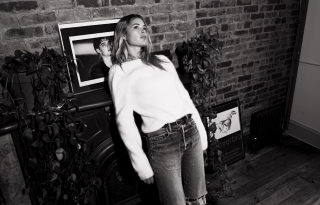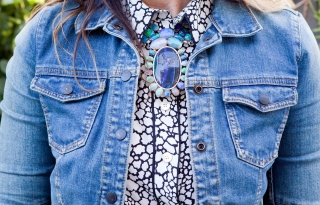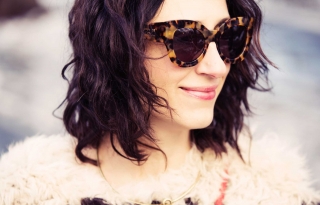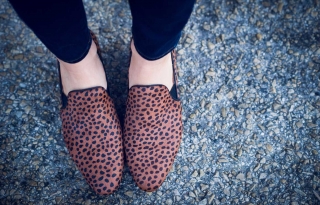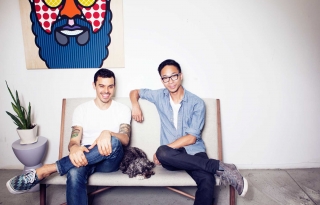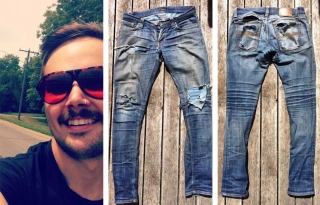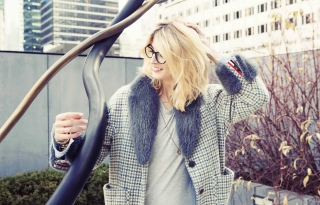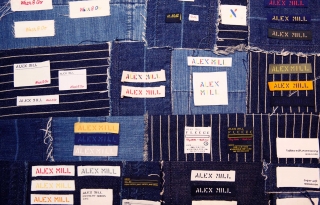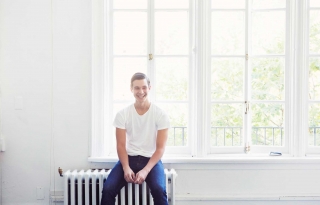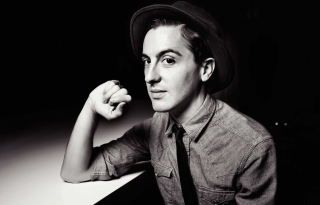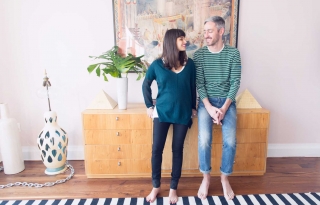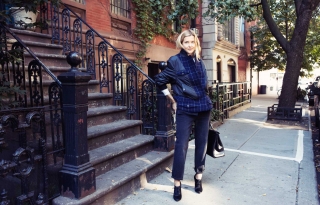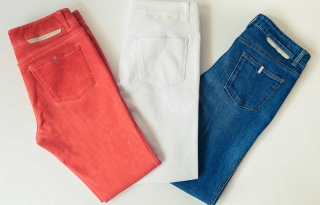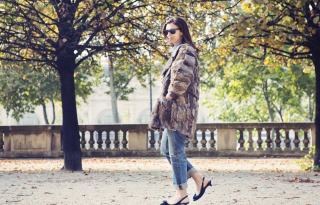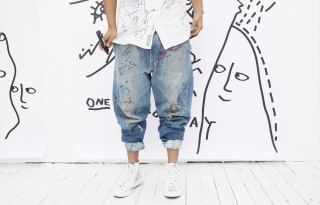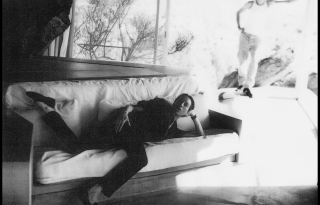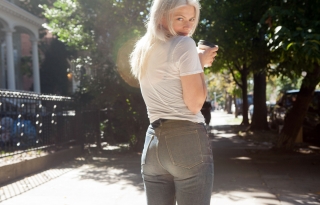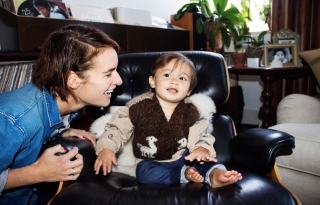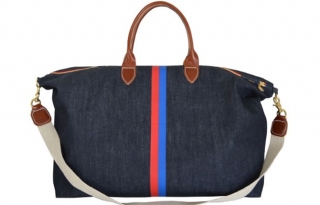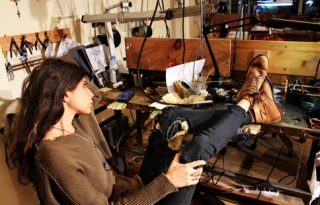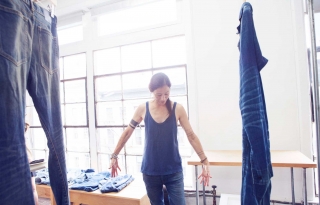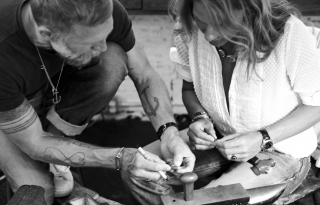When we were in the very early stages of creating Jean Stories, almost everyone in the denim industry we talked to about the site said, “Oh, you know Scott Morrison, right? You have to talk to Scott!” Scott, who co-founded a couple brands you might have heard of – Paper Denim & Cloth and Earnest Sewn – before starting 3×1 in 2011, didn’t disappoint. Charismatic and chatty, he welcomed us into his headquarters on Mercer Street in New York (where anyone can walk in, select a selvedge, and have a pair of custom jeans made by one of several sewers on site), and started rapping. Though he admits he didn’t get into denim for a deep-seated love of fashion, he has spent his life wearing jeans – they are what comes naturally to him, he explained. You need only look at the personal pictures he’s shared with us to see that’s true.
Today, 3×1 is about so much more than bespoke and custom, though; the women’s collection is a real ready-to-wear force. How he got the line to this place is long and winding: He did what he calls “carpool couture” cashmere-cotton separates for a label called ‘RedLine,’ designed jeans for juniors under the Mudd umbrella, launched Paper, Denim & Cloth with Alex Gilbert Gaines in 1999, and worked for Evisu. Through it all, though, Scott’s vision seems always to stem from his roots in Southern California, where everything that denim stands for – a coolness and casualness in life and style – reigns.
Why the denim business for you?
Denim was just something that I could identify with, being a Southern California kid always wearing jeans and t-shirts and flip-flops. For me, my wearing jeans is really more of a necessity. It’s just what I do. I wear them every day – even when I’m getting dressed up, it’s white jeans and a button-down. I still wear flip-flops in New York City; I’m one of the few people who do that. I have much more of a dressed-down aesthetic than my peers and my friends. It’s probably what subconsciously drew me to the denim business, too. I just like that denim lifestyle.
Can you tell us about your process? Where do you start when you’re designing jeans?
It always starts with the denim, the fabric. If I see a new denim that’s really interesting, or something I really don’t have that much experience with – maybe something from a new mill – I’ll do a wear test first. I’ll make a pair of jeans with that denim, and wear it in for four, five, or six months. In my office/studio I might have 40 or 50 jeans on the wall, ones that I’ve worn. And I have a bunch at home, kind of similar to that. When I see something interesting in these wear tests, I use it. That’s really how I work: I think about the fabric first, and then the wash, and then the story we want to tell, whether it’s heritage or something more modern and clean. Or something sporty, or painted… A lot of my inspirations come from things that I’ve worn-in myself.
How many pairs of jeans are you wear-testing at a time?
Usually I have six jeans in my closet on rotation. I wear them each for six months to a year. At a certain point, after six months, I wash them. Then I’ll probably wear them for a month or two, and then I’ll park them forever somewhere. I like wearing them raw for six months, then I wash ‘em once, wear them for a month or two after that, and then that’s it. They go into retirement.
Click on the pictures to see the slideshow
Tell us about the jeans you wore growing up in California…
My first jeans experiences were at Miller’s Outpost in the late 70s, where my mom would take my sister and me to buy jeans when we were kids. We’d go in, and there’d be this entire wall of raw jeans. They didn’t do a lot of washed denim back then. I’d buy Levi’s 501’s in a shrink-to-fit fabric, which is what I always wore until I was 11 or 12. You’d have to buy them a size too big, and get them wet so that they’d shrink and fit. I remember I’d wear them the bathtub to break them in so they didn’t feel like cardboard. We’d jump in our pool with them on, too. Basically, we’d get them soaking, wear them until they dried and fit us, and then wear and wash them and wear and wash them. Back in the day, it was never about wearing them and not washing them. Mom did laundry. We’d wear our jeans until they got dirty, and then we’d wash them.
I can’t say that I remember the names of the jeans I wore after those 501’s, but I do remember rolling tight and cuffing all of my jeans in high school, and wearing them with slip-on Vans, with socks and without. This was when Tony Hawk was really cool. So, every kid would wear their rolled-up jeans and have a half-shaved head with long blond hair on top. I really loved skating; I also had the Vans skate high-tops. Still to this day I am obsessed. I have a massive skateboard collection – hundreds, including every Vision Gator board ever made.
Back then, denim wasn’t what it is today. There’s definitely a certain stretch of time, probably in the 80s and through the 90s, and in the early 2000’s, obviously, when denim became synonymous with cool. I mean, it was always cool with Marlon Brando in the 50s and 60s, but those guys were just wearing regular jeans and it was more about a free-spirited mentality. I do remember getting my first pair of Diesel, Replay and Lucky Brand jeans, in ’88 or ’89. No jeans were over $100. And it was still something you’d save up for.
What excites you about denim these days?
A lot of guys, denim designers, they take a very hard-line approach to denim; it’s more about workwear, things that are much more about authenticity and re-telling the story of yesteryear. And that’s not, and has never been, my push. At 3X1, I’m about making stuff that feels contemporary and that feels great and that looks cool and that looks like you’ve had it a long time – but that fits really well. I’m not so tied to the past. Growing up, jeans were always something really cool and comfortable to live in, and I guess they were a reflection of who we are. That’s what I’m into.
What about women’s jeans? You’ve recently expanded your women’s selection. It looks so good!
Thanks. Yeah, I think what a woman wants now is a pair of great-fitting jeans, certainly. But she also wants something that feels and looks different than what she has in her wardrobe already. I’m looking at innovation in women’s fabrics, with stretches and treatments. So for me, it’s about taking that same love and dedication to finding amazing fabrics that we have on the men’s side, and fostering development with the mills on new technology, and offering that to women. So looking at innovation – two-way or four-way stretches, surface applicants and wax coating, liquid coatings, liquid gel fills. It’s just totally changing the way that women can wear jeans. They don’t bag out as much, and they have amazing feel and texture.
What’s next for 3×1 women’s denim?
We’re doing a program now that’s proprietary to us. It’s a brush-back denim, so on the inside, where the clothes touch your skin, its just as soft as it can possibly be. My vision for spring is all blue – it’s just a sea of blue. And every one of the fabrics is really fantastic on its own. It’s directional, like a drop-crotch trouser or a moto-inspired jacket or a luxe pajama pant, with really amazing fabrics. Elevated. I think we have to service a basic need, we have to have great washes and provide for a discerning customer. But at the same time, women don’t want just another jean all of the time.
Speaking of women, you met your wife Gracileia when you worked at Earnest Sewn. She was the fit model…
We used to see each other two or three times a week, but I didn’t really have that much interaction with the models. Over the years we got to know each other. We’d make small talk. I left Earnest Sewn in 2008, and she started asking around about me. She called me – she’ll say she didn’t, but she did [laughs] – and we ended up going out to dinner.
What do you learn from her about fitting jeans for women?
She’s super opinionated when it comes to jeans! We’ve been together for four-and-a-half years, but I’ve seen her in denim for almost eight years. When she started out, she wasn’t a fit model at all. She was a clothes model just looking for work, and so she went on a casting for a fitting. And fit modeling is a lot about giving feedback. It’s not just about putting stuff on and looking great. But she picked it up quickly. And then I fell in love with her!
